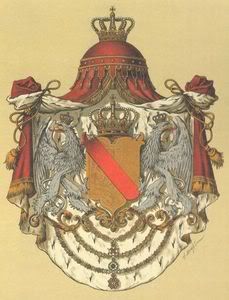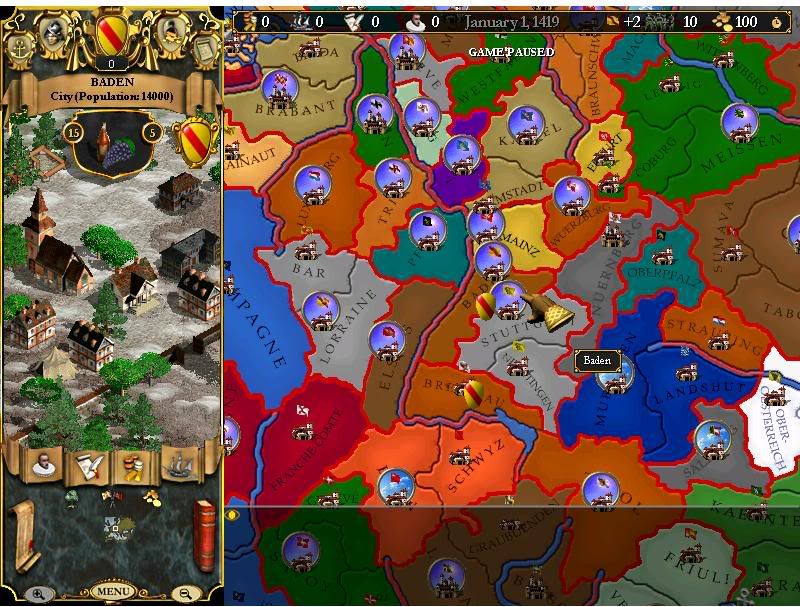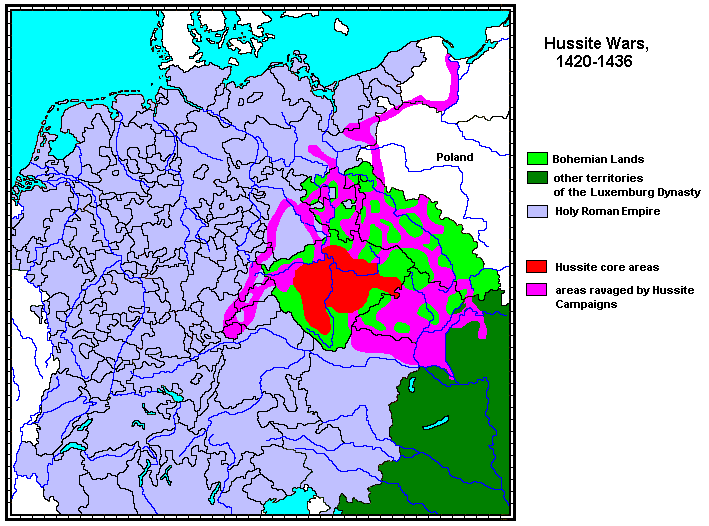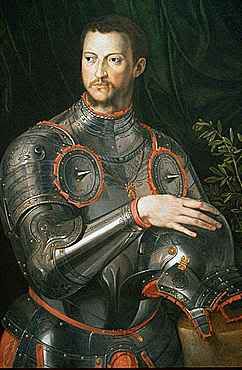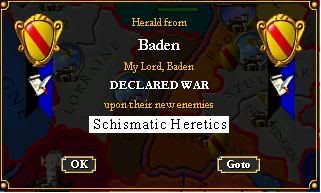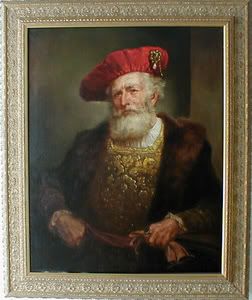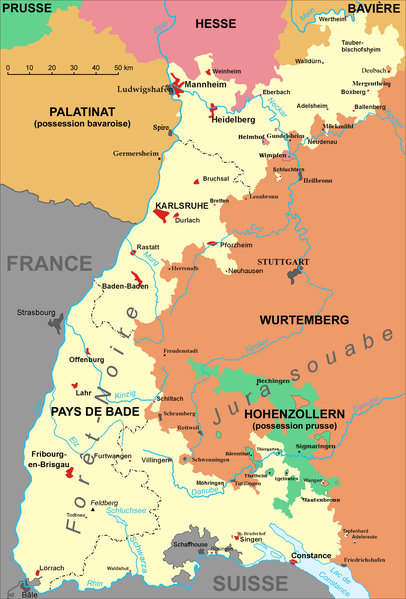Hello. If you are reading this, then that means that you have accidentally clicked on the wrong link; The Eagles of Avalon is one above my fledgling, all too probably short lived AAR.
As you can probably guess, given my post-count, I have never done this before. That means that this AAR is highly experimental, and may be abandoned at any moment, for any reason (including probable lack of readers).
Anyway, to the meat of it:
This AAR will be in a strictly “history-book” formula; there will be basically no characterization. Also, I am not above heavily distorting actual game play for the purposes of this AAR; most illogical AI activity will be airbrushed away, and some events that happened in the real world will still happen, e.g. the Hussite Wars etc. regardless of what happened in the game.
I will be role-playing throughout the game; one of my goals is to, at the end of the day, have a Baden which could have existed realistically. There will be no colonies of Baden in the Americas, nor will there be an “Empire of Baden.”
The actual game is EUII 1.09 with WATK, to hopefully make the German minors survive longer. It will be played on Normal/Normal, for the reason that I am awful at EUII.
A Note on Historical Accuracy: Other than a skim through Wikipedia, I have basically done NO historical research whatsoever. If anyone comes to me with a complaint about historical accuracy, they are probably right. Also, I do not speak a word of German, so you can expect plenty of errors on that front.
Finally, I am 14 years old. If that isn’t a bad omen, I don’t know what is.
As you can probably guess, given my post-count, I have never done this before. That means that this AAR is highly experimental, and may be abandoned at any moment, for any reason (including probable lack of readers).
Anyway, to the meat of it:
This AAR will be in a strictly “history-book” formula; there will be basically no characterization. Also, I am not above heavily distorting actual game play for the purposes of this AAR; most illogical AI activity will be airbrushed away, and some events that happened in the real world will still happen, e.g. the Hussite Wars etc. regardless of what happened in the game.
I will be role-playing throughout the game; one of my goals is to, at the end of the day, have a Baden which could have existed realistically. There will be no colonies of Baden in the Americas, nor will there be an “Empire of Baden.”
The actual game is EUII 1.09 with WATK, to hopefully make the German minors survive longer. It will be played on Normal/Normal, for the reason that I am awful at EUII.
A Note on Historical Accuracy: Other than a skim through Wikipedia, I have basically done NO historical research whatsoever. If anyone comes to me with a complaint about historical accuracy, they are probably right. Also, I do not speak a word of German, so you can expect plenty of errors on that front.
Finally, I am 14 years old. If that isn’t a bad omen, I don’t know what is.
Last edited:


